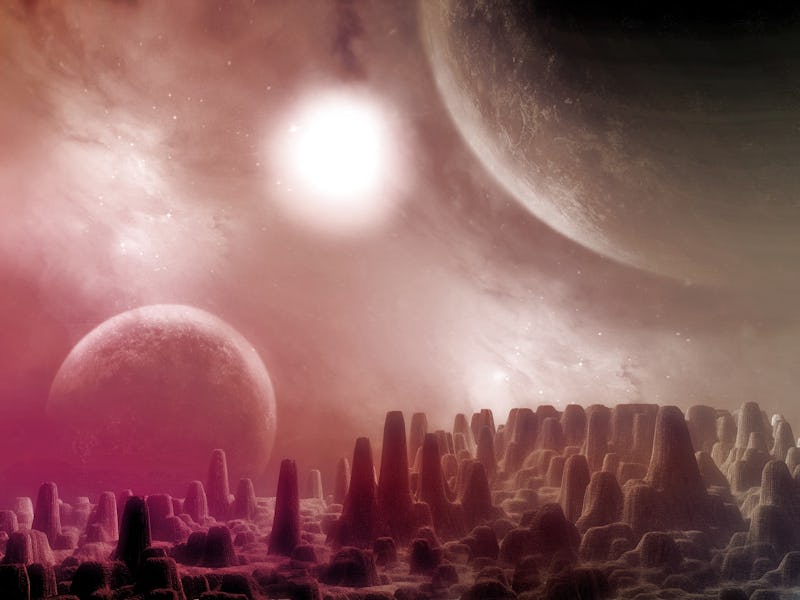Earth is a vibrant, lush planet that’s bustling with life, but if you’re far, far away — enough that the planet just looks like a tiny blue dot — would you be able to tell if there’s was life on Earth at all? Yes, it turns out, but identifying life on a distant planet outside of our solar system is tricky, and requires careful detection of some very subtle biosignatures.
“Life’s impact — for us to be able to see it over very long distances — is going to have to be on a global scale,” Victoria Meadows from the University of Washington and NASA Astrobiology Institute explained during a presentation on Monday.
Meadows, who was speaking at the National Academies of Sciences, Engineering, and Medicine’s two-day workshop, “Searching for Life Across Space and Time,” explained that researchers could determine if there was life on a distant planet by looking for certain clues in the environment as a whole that were probably caused by organic life.
“Look for a ‘disturbance in the force,’” Meadows explained. “Something in the environment that indicates a disequilibrium, or an unknown or unexpected planetary process.”
Such “disturbances,” as Meadows called them in a subtle nod to Star Wars, can include an abundance of gas that seems more likely to have originated from organic life rather than a planetary or geologic source. Other possible biosignatures could include color abnormalities caused photosynthesis, seasonal temperature changes, and a large elemental disequilibrium suggesting an “active source” of the prolific element.
Meadows said that scientists have to be wary of false positives. Getting a Nobel Prize isn’t as simple as merely detecting oxygen in an exoplanet atmosphere, though Meadows said scientists used to think that was the case. “It’s a little more complicated than that,” she explained. “Environmental context is key.”
“How do we recognize the effects of life on an extrasolar planet, and how do we discriminate life processes from the rest of the environment?” she asked, noting that there are ways that a planet could have an eyebrow-raising amount of oxygen in its atmosphere that don’t involve life, like photochemical reactions caused by light from nearby stars.
An alien emits a gas into the atmosphere.
A good biosignature — one that might reasonably provide evidence of life — has three requirements. The first is reliability. That’s essentially the main question: can life create this signature in the first place, and is it more likely to have originated from organic life than from a planetary or geologic source? The second is survivability — does the biosignature get a chance to linger, or is it destroyed or consumed by other planetary processes? Finally, there’s detectability — does the sign build up to the point where us far-off humans would be able to notice it?
As scientists identify more potential biosignatures they can be on the lookout for, the greater likelihood that they might find something. Oxygen is an excellent (but not foolproof) biosignature, but Meadows says researchers can look to Earth’s current environment or its past for other gasses that fit the bill.
There’s more to searching for biosignatures than just looking for life, Meadows added. If scientists aren’t taking the possibility of life into consideration when they study a planet, they might not be equipped to fully understand the environment.
“If we just suppose that the planet is sterile, we might not be able to interpret it correctly,” she said.
